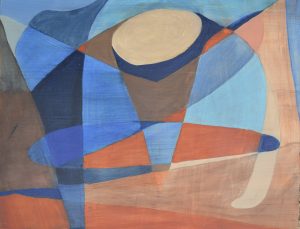 In art and science, or generally in life, the old and new ideas overlap for a considerable period of time. Tensions exist between the rationale and theory for why the old idea was adopted and held strong, while the new premise has to bubble up through our culture and into our psyche as knowledge and then embraced, as subjectivity. It takes time. Adoption rates, for example of new products, can be tracked. Typically the adoption rate of a new consumer product, such as a TV, phone or iPhone follows an exponential curve. The tail of the curve overlaps the new product for sometimes decades. The multiple generations of products must coexist and be supported in the ecosystem. The new does not drive out the old exclusively.
In art and science, or generally in life, the old and new ideas overlap for a considerable period of time. Tensions exist between the rationale and theory for why the old idea was adopted and held strong, while the new premise has to bubble up through our culture and into our psyche as knowledge and then embraced, as subjectivity. It takes time. Adoption rates, for example of new products, can be tracked. Typically the adoption rate of a new consumer product, such as a TV, phone or iPhone follows an exponential curve. The tail of the curve overlaps the new product for sometimes decades. The multiple generations of products must coexist and be supported in the ecosystem. The new does not drive out the old exclusively.
The contradictory nature of many generations of ideas coexisting simultaneously creates a complexity and yet, an opportunity. Similarly our beliefs about race, classes, and ethics all change rather slowly over time; however, they do surely change. Many beliefs overlap in time, creating disagreement between minority and majority groups. As the size and influence of the various groups change, so do the acceptance of the majority and ideas relative to the minority ideas, the acceptance of new versus old ideas.
The question arises, how does one rescue the old idea into present times with a revision or spring lose the historic script that keeps us attached to old ideas? The attachment to the old and the resistance to change, perhaps because of fear of the unknown, are where we, as artists, focus to make change happen. Here then is the opportunity for art and artists to ‘strike preemptively’ working at the ‘nexus of aggravated psychic and social forces’. We can challenge the boundary conditions and break rules, discerning them from laws.
